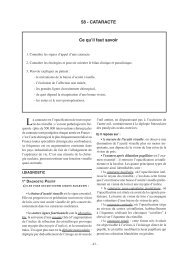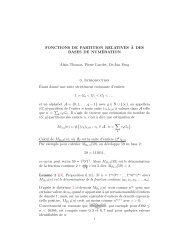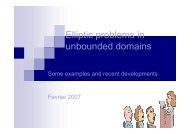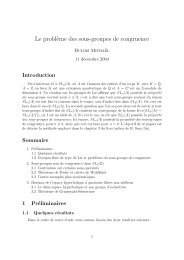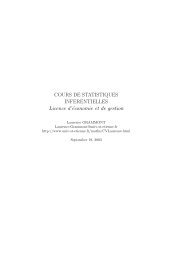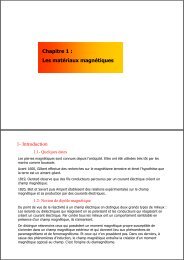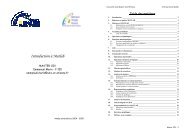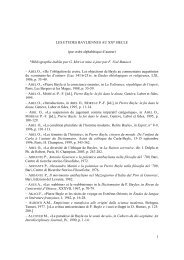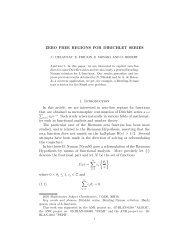COURS DE PROBABILITE 2i`eme année d'économie et de gestion ...
COURS DE PROBABILITE 2i`eme année d'économie et de gestion ...
COURS DE PROBABILITE 2i`eme année d'économie et de gestion ...
You also want an ePaper? Increase the reach of your titles
YUMPU automatically turns print PDFs into web optimized ePapers that Google loves.
48CHAPTER 5. CONDITION D’APPLICATION <strong>DE</strong> LA LOI NORMALE5.1.2 Convergence en probabilité• Définition(X n ) converge en probabilité vers X si <strong>et</strong> seulement si∀ɛ > 0, P (|X n − X| > ɛ) −→n→∞0P(notation : X n −→ X)Propriétéla convergence en probabilité ⇒ convergence en loiLa réciproque est fausse.Théorème ⎧⎨Si⎩E(X n ) −→n→+∞ µ alors X nV (X n ) −→n→+∞ 0P−→ µPreuve : il s’agit <strong>de</strong> démontrer que P (|X n − µ| > ɛ)0. Pour simplifieron supposera que E(X n ) = µ ∀n.Pour cela, on a besoin du résultat suivant :Inégalité <strong>de</strong> Bienaymé-TchebychevSoit la v.a Z telle que E(Z) = µ, σ(Z) = σ,∥ alors P (|Z − µ| > kσ) ≤ 1 ∀k ∈ R +∗ .k 2preuve <strong>de</strong> l’inégalité <strong>de</strong> B.J admise−→n→+∞Fin <strong>de</strong> la preuve du théorème : soit σ n = σ(X n ), soit k n ∈ R tq k n σ n =ɛ. On a 1 k n= σ nɛ , d’oùP (|X n − µ| > ɛ) = P (|X n − µ| > k n σ n ).D’après l’inégalité B.T, on a0 < P (|X n − µ| > k n σ n ) ≤ 1 } {{ } kn2↓ n → +∞0= σ2 nɛ = 1 ɛ V (X n)} {{ }↓ n → +∞0□.




